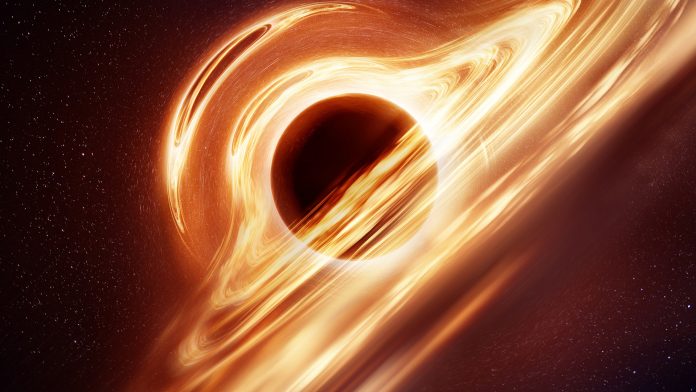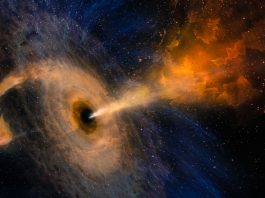A team of astronomers has identified a unique, supermassive black hole that is firing a jet of plasma at a neighbouring galaxy.
The supermassive black hole is hosted by a galaxy called RAD12, which is located around one billion light years away from Earth and has caused phenomena never seen before. The RAD12 black hole is spewing a fiery jet toward its large neighbouring galaxy – RAD12.
The findings of the research are published in Monthly Notices of the Royal Astronomical Society.
Understanding galaxy formation
Based on their morphology, galaxies are predominantly categorised into two classes – spirals and ellipticals. Spiral galaxies have blue-looking spiral arms comprised of cold gas and dust. Stars form in spiral galaxies at an average rate of one Sun-like star per year.
In contrast, elliptical galaxies appear yellowish and do not have distinguishing features like spiral arms. Star forming in elliptical galaxies is rare, with astronomers currently unsure why elliptical galaxies we observe today have not formed new stars for billions of years.
Experts believe that supermassive black holes or ‘monster’ black holes are responsible, as they emit colossal jets made of electrons at high speeds at other galaxies, which depletes the fuel needed to perform future star formation.
The enigmatic RAD12 supermassive black hole
In 2013, researchers utilised optical data from the Sloan Digitised Sky Survey (SDSS) and radio data from the Very Large Array to analyse the unique properties of RAD12, with additional observation with the Giant Meterwave Radio Telescope (GMRT) in India helping to understand its exotic nature.
RAD12’s supermassive black hole was found only to be ejecting a single jet towards the neighbouring galaxy, RAD12-B. This is the first time a single jet has been observed firing from a supermassive black hole, as usually, jets are emitted in pairs that move in opposite directions at relativistic speeds.
The supermassive black hole is ejecting a conical stem of young plasma from the centre that reaches beyond the visible stars of RAD12. Observations with GMRT illuminated that the older and fainter plasma extends beyond the conical stem, flaring out similar to a mushroom. The entire structure is around 440 thousand light years in length – significantly larger than the actual host galaxy.
RAD12 is unlike anything observed before, representing the first time a jet has collided with a large neighbouring galaxy. The findings may help astronomers understand the impacts of these interactions in elliptical galaxies, which may leave them with little cold gas for forming future stars.
Dr Ananda Hota, the leader of the research, concluded: “We are excited to have spotted a rare system that helps us understand radio jet feedback of supermassive black holes on star formation of galaxies during mergers. Observations with the GMRT and data from various other telescopes, such as the MeerKAT radio telescope, strongly suggest that the radio jet in RAD12 is colliding with the companion galaxy.”









